
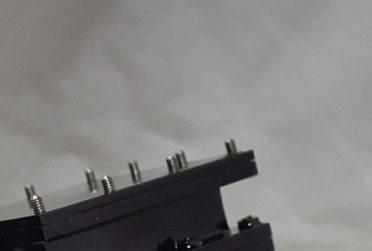

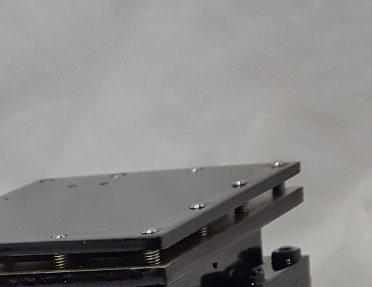



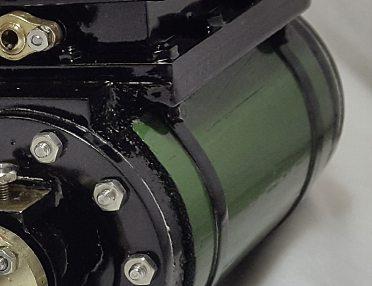


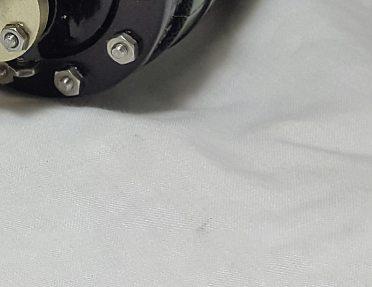



























❖❖ SWEETPEAS BloominginSheffield KelhamIsland HackworthGear Fareham Wevisitawell-established clubonthesouthcoast THEORIGINALMAGAZINEFORMODELENGINEERS Vol.231No.472311–24August2023 Joinouronlinecommunity www.model-engineer.co.uk Sheffield’sIndustrial Museum Howitworks


















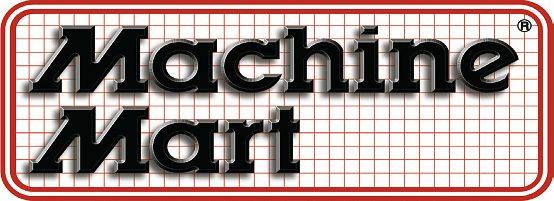





















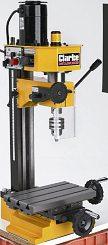
































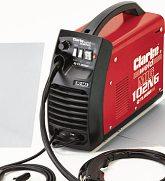






















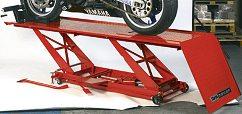



















PublishedbyMortonsMediaGroupLtd, MediaCentre,MortonWay,Horncastle,LincsLN96JR Tel:01507529589Fax:01507371066


©2023MortonsMediaISSN0026-7325
www.model-engineer.co.uk

EDITORIAL
Editor: MartinR.Evans
Deputyeditor: DianeCarney
Designer: DruckMediaPvt.Ltd.
ClubNews: GeoffTheasby
Illustrator: GrahameChambers
Publisher: SteveO’Hara
CUSTOMERSERVICES

GeneralQueriesandBackIssues
01507529529Monday-Friday:8.30am-5pm

Answerphone24hr help@classicmagazines.co.uk www.classicmagazines.co.uk

ADVERTISING
Groupadvertisingmanager: SueKeily
Advertising: CraigAmess camess@mortons.co.ukTel:01507529537
Adproduction: AndyTompkins
Bypost: ModelEngineeradvertising,MortonsMedia Group,MediaCentre,MortonWay, Horncastle,LincsLN96JR









PUBLISHING
Salesanddistributionmanager: CarlSmith










Marketingmanager: CharlottePark
Commercialdirector: NigelHole
Publishingdirector: DanSavage
SUBSCRIPTION
Fullsubscriptionrates(butseepage246foroffer): (12months,26issues,incpostandpacking)–UK£128.70.Exportratesarealsoavailable, UKsubscriptionsarezero-ratedforthepurposes ofValueAddedTax.


Enquiries:subscriptions@mortons.co.uk
PRINTANDDISTRIBUTIONS
Printedby: WilliamGibbons&Son,26Planetary Road,Willenhall,WestMidlands,WV133XB





Distributionby: SeymourDistributionLimited, 2EastPoultryAvenue,LondonEC1A9PT
EDITORIALCONTRIBUTION

Acceptedphotographsandarticleswillbepaidfor uponpublication.Itemswecannotusewillbereturned ifaccompaniedbyastampedaddressedenvelope andrecordeddeliverymustclearlystatesoand enclosesufficientpostage.Incommonwithpractice onotherperiodicals,allmaterialissentorreturnedat thecontributor’sownriskandneitherModelEngineer, theeditor,thestaffnorMortonsMediaLtdcanbe heldresponsibleforlossordamage,howsoever caused.TheopinionsexpressedinModelEngineer arenotnecessarilythoseoftheeditororstaff.This periodicalmustnot,withoutthewrittenconsentofthe publishersfirstbeinggiven,belent,sold,hiredoutor otherwisedisposedofinamutilatedconditionorin otherunauthorisedcoverbywayoftradeorannexed tooraspartofanypublicationoradvertising,literary orpictorialmannerwhatsoever.







248SMOKERINGS
News,viewsandcommentontheworldof modelengineering.

249ANENGINEER’SDAYOUT
RogerBackhousepaysavisittotheKelham IslandIndustrialMuseuminSheffield.
254LNERB1LOCOMOTIVE
DougHewsonpresentsatruetoscalefiveinchgaugemodelofThompson’sB1.
258POSTBAG



Readers’letters.
259THESTATIONARYSTEAM ENGINE
RonFitzgeraldtellsthestoryofthe developmentofthestationarysteamengine.
263THEEATINGOFELEPHANTS
SteveGoodbodyarguesthatanythingis possibleifyoutakeitabiteatatime.
269RECYCLINGA3½ INCH GAUGESOUTHERNSCHOOLS LOCOMOTIVE


RobertHobbsturnsaboxofbitsintothe Southern’s‘V’Classlocomotive Winchester
273ANEWWORKSHOP
PeterSeymour-Howelltakesabreakfrom building FlyingScotsman tobuildanew workshop.

276SWEETPEARALLY2023
GeoffTheasbyfindsafinecollectionof SweetPeasinSheffield.
278RADIALVALVEGEARSAGAIN
DuncanWebsterexploresthesubtletiesof valvegearoperation.
281WEVISITTHEFAREHAMAND DISTRICTSME

JohnArrowsmithheadstothesouthcoastto visitawell-establishedclub.
286AFIVE-INCHGAUGE0-4-0 PADARNRAILWAYTENDER LOCOMOTIVE
Luker presents FireQueen,aWelshslatequarry locomotive.
292CLUBNEWS
GeoffTheasbycompilesthelatestfrommodel engineeringclubsaroundtheworld.
295CLUBDIARY
FutureEvents.
http://www.facebook.com/modelengineersworkshop
http://twitter.com/ modelengineers
Apairofcylindersfor FireQueen,Luker’s five-inchgaugeWelshslatequarry locomotive(photo: Luker).

Vol.231No.472311–24August2023
www.model-engineer.co.uk
ONTHE COVER...
ThenextwillbeonsaleonAugust25,2023. SWEETPEAS BloominginSheffield KelhamIsland HackworthGear Fareham Wevisitawell-established clubonthesouthcoast THEORIGINALMAGAZINEFORMODELENGINEERS Vol.231No.472311–24August2023 Joinouronlinecommunity www.model-engineer.co.uk Sheffield’sIndustrial Museum Howitworks &SAVESUBSCRIBE
49% Seepage246 fordetails. 243 www.model-engineer.co.uk 281 263 286
ThisissuewaspublishedonAugust11,2023.
UP TO















































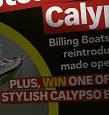











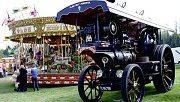



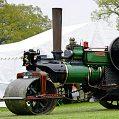










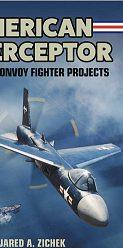


















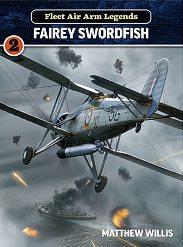









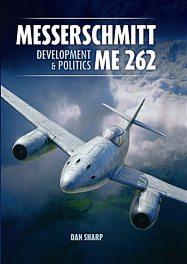


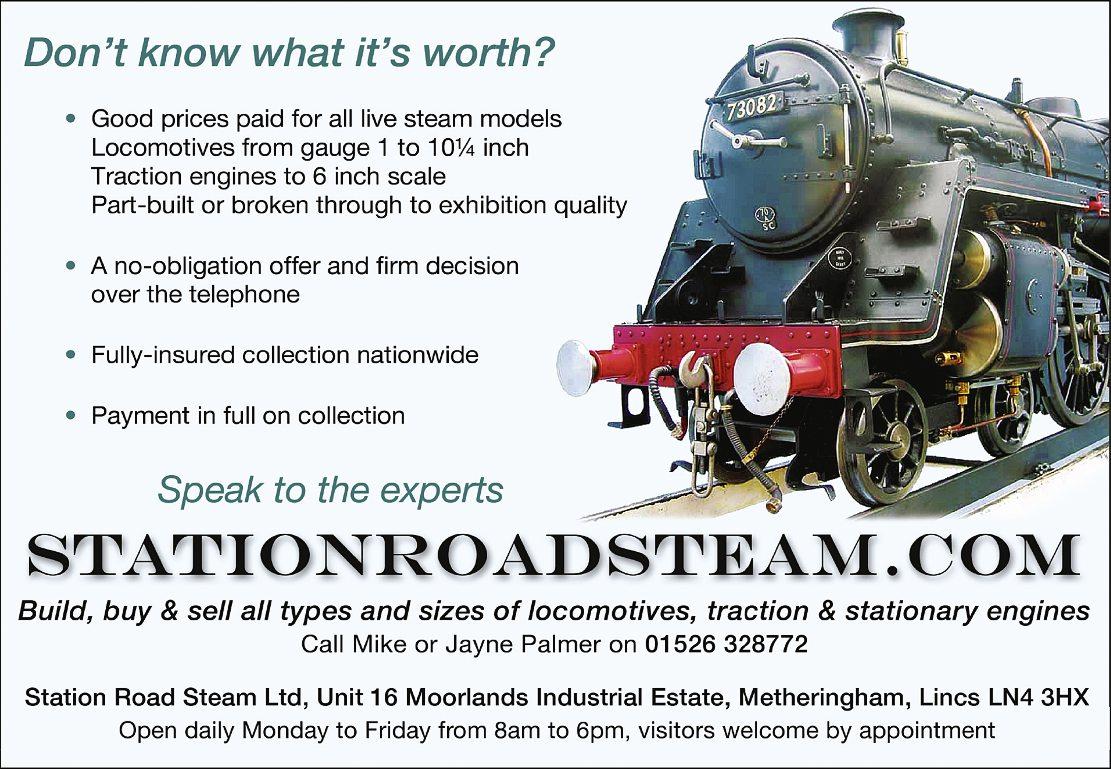




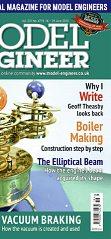









Enjoy12monthsforjust£65 SUBSCRIBE ANDSAVE >> FreeUKdeliverytoyourdoororinstantdownloadtoyourdigitaldevice >> Savemoneyonshopprices >> Nevermissanissue >> Receiveyourissuebeforeitgoesonsaleintheshop Greatreasonstosubscribe PRINT+DIGITALDIGITALONLY PRINTONLY Quarterlydirectdebit for £18 1yeardirectdebit for £65 1yearcredit/debitcard for £70 Quarterlydirectdebit for £21* 1yeardirectdebit for £82.99* 1yeardirectdebit for £84.99* 1yeardirectdebit for £49* 1yearcredit/debitcard for £52.95* *Anydigitalsubscriptionpackageincludesaccessto theonlinearchive.

classicmagazines.co.uk/ M E D P S 01507 529529 and quote MEDPS Lines are open from 8.30am-5pm weekdays GMT O ffe r e nds D e ce mb e r 31, 2023 Subscriptions will s t ar t w ith the ne x t availab le issue D ire c t D e bit p ay me nt s w ill continue on the agre e d p lan unless you te ll us othe r w ise To v iew the privac y p o lic y for MMG Ltd (pub lishe r of M o de l Engine e r), p lease v isit w w w. mor tons .co.uk /privac y Pl e ase v i s i t w w w.c l ass ic m ag a z i ne s .co.u k / te rm s for fu l l te rm s & con d i t ions . ( 8
IMLEC IMLEC2023washeldatthe BristolSociety’strackinAshton Courtovertheweekendof 7thto9thJuly,aspart ofthe50thAnniversary celebrationsoftheirtrack. Theweekendwaswell supportedwithmany IMLECregularsenjoying theusualcamaraderie oftheevent.Therewas aninterestingmixof locomotives,andagood contrastofcompetition experienceamongstthe competitors.


Fridaywasdryandhotand thereweresomegoodruns butalsosomeretirements. Blusteryandshoweryweather followed,althoughthatdidnot seemtodampenthespectator’s enjoymentoftheproceedings. Despitetherainandproblems withadhesionthereweremany impressiverunsandgood competition.
AtsomepointontheSaturday watermanagedtogetinto thedynamometercar’sload cellresultinginatemporary suspensionofproceedings. Thesituationwasrepairedand thecompetitionresumedon Sundayandcarriedthroughtoits completion.Thisloadcellfailure togetherwithsomechallengesin harvestingthedataattheendof someoftherunscastdoubtover thereliabilityofsomeresults.
Inthedaysimmediately followingtheeventtheBristol IMLECteamconcludedthat theaccuracyandvalidityofthe resultsforthisyearwerenot robust,andshouldbedeclared nullandvoid.Thiswasadifficult decisionandnotonethatany Societywouldwishtomake,but giventheproblemsencountered nootherdecisionwouldhave beenfairtoallparticipants.




WeetingRally
Ispentaverypleasantdayon July15th attheWeetingSteam EngineRally.Thisisheldeach yearatFengateFarminWeeting, justovertheSuffolk/Norfolk borderfromBrandon.Itmustbe oneofthebiggeststeamralliesin thecountry,judgingbythesheer acreageofspaceitoccupies,and thesizeofthefielddedicated tocarparkingandcampers’ caravans.Therallyplayshostto virtuallyeverykindofwheeled vehicle,including,thisyear,no fewerthan93full-sizetraction engines.Mostofthemseemed tobeBurrells,whichseems appropriateastheirhometown ofThetfordisjustuptheroad.
Perhapsthemostexciting momentsweretheappearancein theshowringsofthefireengines, boththeusualredonesandthe preservedGreenGoddesses. Thesebroughtwiththemalot ofnoiseandexcitementtokeep thecrowdentertained.Apart fromthistask,though,they helpedkeepthetractionengines suppliedwithwater.
Motorcycles,classiccars, agriculturalequipment,military vehiclesandafairground completedtheline-up,along withseveralbeertentsandfood stalls.Miniaturetractionengines completedtheline-upand theBrandonSocietyofModel Engineerswerekeptverybusy providingtrainridesontheirtrack inanadjacentfield.


Competingwiththefire enginesforthetitleofnoisiest exhibitwasalargefairground organ.Thiswasequipped withavastlibraryofmusic, allstoredonpunchedcards,
similartothoseusedina Jacquardloomand,muchlater, asawayofloadingdatainto earlyelectroniccomputers. Anearlyformofdeliveringa program(me),perhaps.
POGRally
IfyouhaveaPollylocomotive, whynottakeitalongtothe PollyOwners’Grouprally?This willbeheldattheRugbyModel EngineeringSociety’strack onSeptember9th.Formore informationpleasecontactNeil Mortimeratneiljmortimer@ gmail.com

ModelEngineer 11August2023
DIANE CARNEY Assistant Editor
onthemobilenumberor emailbelowandwouldbe delightedtoreceiveyour contributions,intheform ofitemsofcorrespondence, commentorarticles.
248
MARTIN EVANS Editor
MartinEvanscanbecontacted
07710-192953 MEeditor@mortons.co.uk
AFowlershowman’senginesupplies electricitytothedodgems(photo JocelynFung).
Theextensivemusiclibraryforthe organandthereadingdevice(photo JocelynFung).
Afairgroundorgancompeteswiththenoisyfireenginesintheadjoiningshow ring(photoJocelynFung).
AnEngineer’sDayOut
Sheffield’sKelhamIsland Museum andtheKenHawley Collection
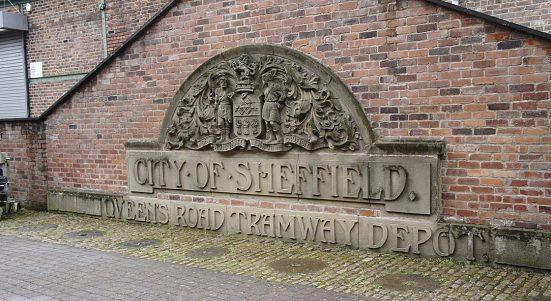
PART1
KelhamIslandIndustrial Museumwasfeaturedfor thisseriesin2005(Model Engineer, Vol194no4224,1 April2005,pp389-391).Ithas developedsigni cantlysince then,notleastbynowhousing thevastKenHawleycollection, probablythebestcollection oftoolsintheseislands,if nottheworld.Otherexhibits
re ectShef eld’shistoryasa leadingtoolmakingcentreand themuseumemphasisesiron, steel,cutleryandengineering withassociatedsocialhistory. Itisafascinatingplacetovisit.
ThankstoajointYorkModel EngineersandSMEEvisitheld inMay2023,Irevisitedthe museumenjoyingaguidedtour givenbyRichardGibbonOBE. HewasKeeperofIndustrial Conservation,appointedin 1979tosetupexhibitsbut stayingforovertenyears!

Thebuildingwasformerly thegeneratingstationfor Shef eldTramways(photo2). AcabletunnelundertheRiver Donlinkedtothecentreofthe tramwaynetworkatCitySquare, butthiswasproneto ooding.
Shef eld’sironandsteel history
Shef eld’searlierhistoryis welldescribedatthenearby
WesternParkMuseum.The cityoweditssuccesstolocal coalandfast owingrivers poweringwaterhammers, grindingwheelsandblowing enginesforfurnaces.
Grindstonescamefromthe nearbyPeakDistrict.Ironwas producedlocallyandturned intosteelearlyon,making Shef eldknivesfamous,even inChaucer’sEngland.Later, SwedishDannemoraironwas foundtohavebetterqualities forconvertingtosteelforedge tools,whilstEnglishsteelwas consideredgoodformaking leswhichbecameaShef eld specialty.
Technicalinnovationplayed apart.Ironwasconverted intosteelincementation furnacessuchasthisone nearby,lookinglikeanold stylepotterykiln(photo3).


249 www.model-engineer.co.uk >>
Roger Backhouse returns toKelhamIslandto learnaboutShef eld’s industrialhistory.
ABessemerconverteroutsideKelhamIslandmuseum.SteelwaskeytoShef eld’s industry.ThisexamplecamefromWorkingtoninCumbriaandwasre-erectedunder theguidanceofRichardGibbonOBE.
KelhamIslandoncegeneratedelectricityforShef eld’stramways.Acabletunnel linkedtothecentreofthenetworkinCitySquare.
1 2 3
Acementationfurnaceformaking steel.Ironbarswereputintochestsand packedwithcharcoal,thenheatedto make‘blister’steel.
(Thereisanotherexampleofa differentdesignatDerwentcote inCountyDurham.)Barsof ironwerepackedintoiron chestswithlayersofcharcoal andheatedforseveraldays beforebeingallowedto cool.Ironabsorbedcarbon tobecome‘blister’steel,so calledduetoitsappearance. Unfortunately,though,quality wasinconsistent.AQuaker clockmaker,Benjamin Huntsman,triedtomake aconsistentqualitysteel forhisclocksprings.After considerableexperimentinghe developedcruciblesteelusing speciallymadeclaycrucibles. Measuredquantitiesofiron andotheringredientswere placedinacrucibleandthen heatedinafurnace.Aftera three-hourmelttheresulting moltensteelcouldbecast.
Themuseumhasexamples offormercruciblesteel furnaces(photo4).This inventionwaskeytoShef eld’s reputationforqualitysteeland thecrucibleprocessremained inusewellintothe20thCentury forspecialiststeels.Itwasa Shef eldman,HarryBrearley, whoinventedstainlesssteel andotheralloyshavesince beendevelopedinthecity.


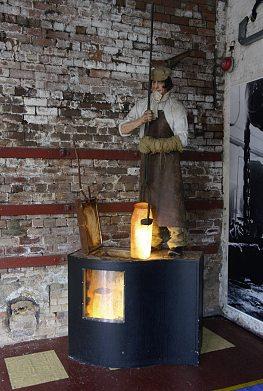
Museumattractions
TheBessemerconverter, re-erectedattheentrance, givesanideaofwhatiswithin
(photo5). HenryBessemerdid muchofhisworkinShef eld andseveralworkshadhis converters.Airwasblown throughmoltenironinthe convertermakingforoneof themostimpressivesightsin industry!Thisremovedexcess carbonleavingmildsteel.Mild steelwasfarcheaperthanthe cruciblesteelorwroughtiron previouslyavailable.Itwas rapidlyadoptedformakingrails andthe rststeelrailwasmade byRobertMushetusinghisown processintheForestofDean. ItwaslaidatDerbystationin 1857.Unlikewroughtironrails, steeldidnotdelaminateinuse solastedfarlonger.
Themuseumconvertercame fromWorkingtonandheld30 tonsofmetal.(Thereisamuch
smallerexampleintheScience MuseuminLondon.)Haematite ironoresfoundinCumbria wereparticularlysuitablefor steelmakingusingBessemer’s process.
RiverDonengine
Oneofthe nestexhibitsin anyBritishmuseum,theRiver Donengineoncepowereda steelrollingmill(photo6). Builtin1905bythe rmof DavyBrothersforCharles Cammell’sGrimesthorpe WorksitwasmovedtoVickers’ RiverDonWorksin1957and thentotheMuseumafterthat closedin1976.Itisusually demonstratedtwiceadayso theenginecanbeseenworking understeam,andit’san amazingsight(photo7)!
Thisisathreecylinder, invertedsingleexpansionengine ratedat12,000horsepowerand weighingintotalover400tons. Itcouldrollplateupto16inches (40cm)thickandweighingup to50tons.Steelrollingmust bedonequicklyorelselarge slabshavetobereheated.Fast reversalisessential.TheRiver Donenginecanbeslowed, reversedandbroughtupto speedagainintwoseconds withoutshuttingthrottles! Thisisachievedthanksto carefuldesignthatfocussed onminimisingtheinertiaofthe engine(photo8).Thevalvegear isderivedfromJoybutwithout theslidesforadieblock. Instead,longarmsreplicatethe actionofthatblock.Theengine israpidlythrownfromforward toreversebyapairofhydraulic cylindersarrangedinopposition toeachother.Waterfrom
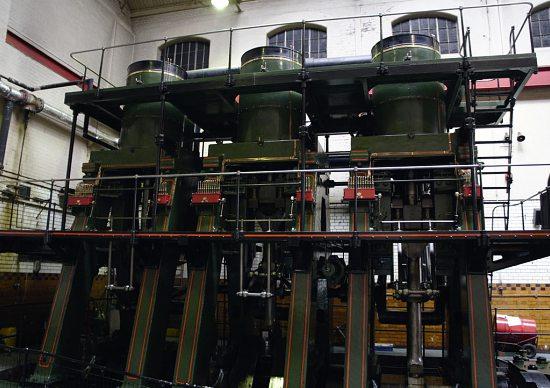
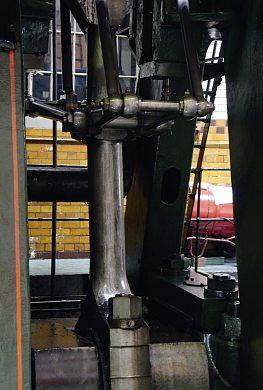
250 ModelEngineer 11August2023
Cruciblesteelmaking.Ironandother materialswereplacedinespecially madecruciblesandheatedforthree hours.Theresultingsteelcouldbe pouredandwasofconsistentquality, idealformakingtools.
BaseofaBessemerconverter.Hotairwasblownfromthebasethroughmolteniron, removingimpurities,tomakemildsteel.ThereweremanyexamplesinShef eldand blowingaconverterwasaspectacularsight.
ThemightyRiverDonrollingmillengine.Seeingthisworkingisoneofthemost spectacularoperationsinanyBritishindustrialmuseum,eventhoughitisdeprived oftherollingmill.Reversingwasdoneinjusttwoseconds.Anearbyvideoshowsit asitusedtooperate.
EndviewoftheRiverDonengine.
4 5 6 8 7
ConnectingrodfromtheRiverDon engine.
anhydraulicmainat300psi operatesthereversingcylinders.
RichardGibbonsaysthat thebaseframework,weighing 24tons,wastheworstpart tomove.Hewasinspiredby anIrishmaninhisteam,Matt Boggan,whosemottowas ‘the willingmanwillfindaway’.Matt suggestedthata12toncrane couldmovea24tonbaseplate bycarefuluseofrollersat oneendandquantitiesofold railwaysleepers.Thejobwas done-butprobablyaftersome anxiousmoments.
Sadly,itwasn’tpossibleto preservetheassociatedrolling millbutanearbyvideoshows theengineinactionrolling steel.Itdidthisfromtheage ofDreadnoughtbattleshipsfor whichitrolledarmourplate, torollingsteelforCalderHall nuclearpowerstation.
Theboiler,formerlyusedto powertheenginefrom1980to
2015,isdisplayedsectioned nearby,asisamodelofthe battleship HMSBenbow, a shipbuiltwithShef eldrolled armourplate.This,however, camewithadarkside;Shef eld rmssetupacartel, xingthe priceofarmourplate,leading to enormouspro tsduringthe FirstWorldWar(photo9).
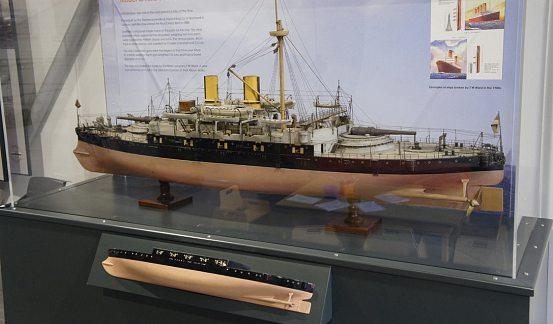
Outsidesomesmallerrolls showhowdifferentpro lesand patternscouldbeproducedon barsteel(photo10).
Crossleygasengine

ACrossleygasengineis usuallyrunningnearby(photo 11). InventedbyJeanLenoir in1860,thegasenginewas the rstworkinginternal combustionengine.Many thousandswerebuilttorun ontowngasorgasfrom smallerproducergasplants. Oftenusedinsteadofsmall steamunits,therewasno
requirementforaboiler anditsassociatedpressure testing.Sometimesgas engineswereusedasstandby forextantsteamplant,asat Darlington’sTeesCottage PumpingStation.Thisengine wasmadeinManchesterin 1915andpoweredarolling millatHad eld’ssteelworks. Crossley’slargestsingle cylinderengineusedafour strokecycleandgenerated 150hpat160rpm.The museumexamplecanrunon propanebutisnowelectric poweredfordemonstration purposes.


Stephensonvalvegear engine
Earlyvalvegears,likethe‘gab’ typeusedonStocktonand Darlingtonlocomotives,were unsophisticatedanddidnot
allowforexpansiveworking sothemuseum’spioneer Stephensonvalvegearisa highlysigni cantexhibit.The gearwasdevelopedbyWilliam Howewith,perhaps,alittle helpfromGeorgeStephenson. Hereistheenginethey developed,demonstrating the rstuseofStephenson valvegearusedatacolliery inClayCross,Derbyshire (whereGeorgeStephenson livedandhadmajorbusiness interests).Ithasforward andreverseeccentricsand acurvedlink.Thiscouldbe reversedwhilstonthemove -gabvalvegearcouldonly bealteredwhilststationary -anditcanbe‘notchedup’ toallowformoreexpansive useofsteamcontributingto engineeconomyandef ciency (photo12).
251 ENGINEER’SDAYOUT www.model-engineer.co.uk >>
Modelof HMSBenbow builtbyThamesIronworksin1888.Itusedarmourplate ofupto45cmthicknessrolledbyCharlesCammellLtd.ofShef eld.MostBritish warshipsusedShef eldrolledplatearmour.Someofthe rstwasusedon HMS Warrior,nowpreservedatPortsmouth.
Exampleofasmallrollingmilldisplayedoutside.Thesecouldproducedifferent pro lesandevenpatternsontherolledbars.
ThisCrossleygasengineonceworkedatHad eld’ssteelworksdrivingarolling mill.ItwasbuiltinManchesterin1915.
9 11 10 12
TheoriginalStephensonLinkvalvemotion,the rsttoallow‘notchingup’,allowing theexpansivepowerofsteamtobeusedfully.
Othermachines
Thereisarecreatedworkshop withmachinetools(photo13) andnearbyalargelathe. JamesNasmyth’sinvention ofthesteamhammer transformedheavyforging inShef eldasitmeantthat manufacturersnolonger neededtobenearasourceof waterpower(photo14).
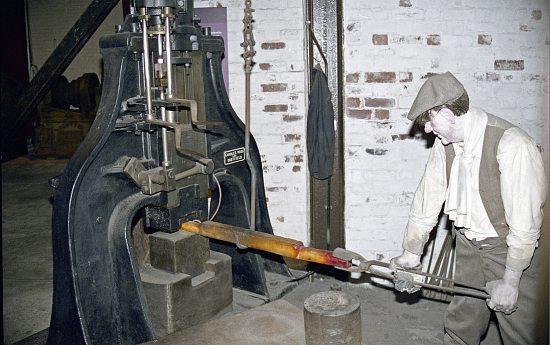


JosephBramahwasa Barnsleymanwhotrainedas acarpenterspecialisingin cabinetmaking.Hedeveloped animprovedwatercloset, thebeerengineandanew typeoflock,reckonedfor manyyearstobeunpickable. Bramahworkedcloselywith HenryMaudslaytoimprove machinetoolstohelpmake hislocks.Hewasalsoknown forinventingthehydraulic
pressin1795withanexample ondisplay(photo15).
Baileybridge
Twomuseumbuildingsare linkedbyasteelbridge(photo 16). DonaldC.Baileywas astudentattheUniversity ofShef eldanddesigneda portablebridgebuiltfrom standardunits-inessence a‘kitofparts’-thatcouldbe constructedquickly.Thiswas verysigni cantformilitary applicationsgiventhatit’s standardpracticeforanarmy todestroybridgesbehind itasitretreatsso‘portable’ bridgeshaveahighvalue tothemilitary.Althoughthe designhasbeenreplacedby othertypes,afewexamples survive;thereisonenear Ripon,forexample,where manywereassembledfor practice.Themuseumhas, appropriately,ashorter exampleofaBaileyBridge.

Manypartsweremadeinthe city.Tospeedconstruction engineersweretrainedusing kitsofone-tenthsizeparts madebyBassett-Lowkeof Northampton.(SeePathe lm. https://www.britishpathe. com/asset/78319/including useofamodel.)
Sadly,theMeltingPot playareahasclosed.Inplay equipmentchildrencould be‘blown’fromaBessemer converterdownaslide,‘rolled’ througharollingmilland ‘hammered’.Equipmentwas wornoutbutit’stobehopedit canbereplaced.
LittleMestersworkshops
Shef eldwasnotedforits ‘LittleMesters’workshops whereself-employed specialistswouldcarryout worklikemakingrazors, producingpenknivesorknife grinding.Onmy2005visitI metLeonardRichardsonatthe
AbbeydaleIndustrialHamlet, a‘LittleMester’whomade surgicalinstruments.Surgeons sometimesrequiredaspecial toolandhewasthemanto makeit.TheYorkshirePost(10 June2023)carriedanobituary ofBrianAlcock,thelastself employedhandgrinder.Few such‘LittleMesters’still operate.
Themuseumhasa recreatedstreetwith workshops;onesuchisthe watchmaker’sworkshop,a reminderthatShef eldalso producedsmallpartsaswell asheavyengineering(photo 17). Manyreaderswillhave micrometersordialtest indicatorsmadeby rmslike MooreandWright.

Specialismsincluded makingmagneticpartsand compassneedles(photo18). Theseskillswereputtouse whenthecavitymagnetron wasdevelopedduringthe secondworldwar,essential forcentrimetricradarthat couldbeusedonshipsandin aircraft.
Shef elddidn’tonlyhaveheavy industry.Severalprecision manufacturerssetupinthecitylike thiswatchmaker’sshopfeaturingin are-createdstreetof‘LittleMaster’ workshops.
252 ModelEngineer 11August2023
Smallerlatheinarecreatedworkshop.Thereweremanysuchworkshopsaround thecity.
Steamhammer.Theirusemeantthatmuchheavierforgingscouldbemadeand accesstoasourceofwaterpowerwasnolongerneeded.Later,hydraulicpresses tookovermuchofthatwork.
JosephBramahwasaYorkshireman whoinventedthehydraulicpressin 1795.Hestressedtheimportanceof workingtoclosetolerances,helpedby HenryMaudslay.
ThisexampleofaBaileyBridgelinkstwomuseumbuildings.Suchbridgeswerean essentialpartoftheAlliedadvanceinItalyduringtheSecondWorldWar.
13 14 15 16 17
Cutleryandflatware
Whenopen,thecity’sCutlers HallhasdisplaysofShef eld madeproducts.Besidesknives (cutlery)thereisalso atware, suchasspoonsandforks,and largeritems.Manufacturers evolvedspecialisttypesof knife;oneisthesocalled ‘Nelsonknife’combining knifeandforkinone,perhaps intendedtobeusedbyaperson withonehand(photo19).
Shef eldPlatewasinvented in1743.Ithadanouter coatingofsilverrolledonto brassorcopper.Farcheaper thanrealsilveritlooked‘just liketherealthing’andthe

industrygrewwithnickel-silver adoptedasthebasematerial fromthe1820s.Shef eldplate wasusedforbowls,cups, platesandevenornaments. Workpiecescouldbepressed intomouldssotherewasa diesinkingindustryinthecity andadiesinkersworkshop featuresinthemuseum (photos20 and 21). From around1845Shef eldplate wasreplacedbyelectroplating butcutlerytradesstill dominatedpartsofthecity. Museumdisplaysshowjust howmanymanufacturers therewere,widelydispersed aroundthecitycentre.

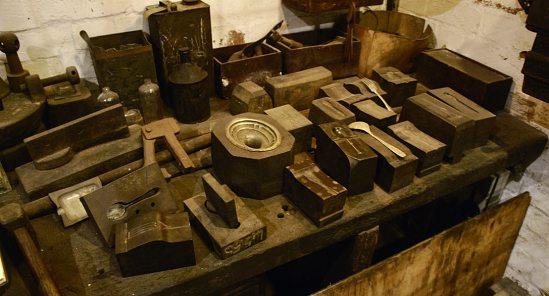
Shef eldwas the centreformakingcutleryandflatware.Manyexamplesofknivesare displayedintheKenHawleycollection.Thecentreknifeisknownasa‘Nelson’knife combiningknifeandfork,probablyintendedtobeusedbyapersonwithonehand.

Womencarriedoutmany jobsinShef eld’sindustries. Oneofthespecialtiestypically practisedbywomenwas ‘buf ng’topolishcutlery andsilverplate(photo22). Anotherjobwaspackingfor dispatch.Qualitycutleryis
stillmadeinShef eldand DavidMellormakesmodern designsnearbyatHathersage wheretheworksareopenat weekends.

253 ENGINEER’SDAYOUT www.model-engineer.co.uk
Anotherspecialisttradewasmakingmagneticneedlesandcompasses.
Diesinkingwasanadjuncttothecutleryandflatwaretrade.Theinventionof Shef eldPlatebroughtmuchnewbusinesstothecity.OldShef eldPlateisstill collectable.
UseofdiesspeededcutleryproductionhelpingShef eld’s rmstodominatethe trade.
●Tobecontinued.
18 20 21 19 22
Womencarriedoutmanyjobsinthecity-buf ngandpackingcutleryand silverwarewereusuallydominatedbywomen.DuringtheSecondWorldWarmany wentintotheheavyindustriesandarecommemoratedbytheWomenofSteel statueoutsidetheCathedral.
LNERB1Locomotive
PART26 – SLIDEBARS,CROSSHEADSANDCONNECTINGRODS
Doug Hewson presentsan authentic5inchgauge versionofThompson’s B1locomotive.
Continuedfromp.206, M.E.4722,July28
Ithoughtthatitwouldbea goodideanowtomakethe slidebarsandconnecting rods( gs92, 93 and 94).You willneedsome ⅜ x1¼ inch BMSmaterialtomakethese. Now,pleasedon’ttellmethat youcan’tgetthatsizeofbar asalltheimperialsizesare availablefromoneofour advertiser’s,namelyMMachine whoadvertiseregularlyin
ModelEngineer.Acoupleof footshouldeatthejob. Iwouldmakeastartby pro lingtherodsandthinthem downafterwards.Theycan alsoprovidethematerialfor theslidebars.WhenImademy Y4Imachinedthepro lefor astartandIknowthatthese arealotdifferentfromtheB1 connectingrodsbutIhavea fewphotographsofmaking

theserodswhichgivesafew tipsonhowImadethem.
Photograph179 showsme thinningtheY4rodsdownbut notethatImountedtherodona pieceof1½ x1½ inchangleand notethatthisisthesecondside soImountedapieceofpacking betweentherodandtheangle sothatitdidnotspringonthe millingmachine.Theholeswere drilled rstsothatIcouldbolt
254 ModelEngineer 11August2023
Connectingrod. Slidebars.
Crosshead.
Fig92
Fig93
Fig94
theconrodsolidly. Photograph 180 showstheendsofthe rodsbeingroundedonthelittle endsoftherods.Withthis,the rodisdroppedoveraspecially madepinsothatitisfreeto rotateandispulledroundby handforwhichyouneeda stoutglove.Don’tbegreedy duringthisoperationandjust takea20thoucutatatime. Ilearnedthisoperationfrom LBSCwhilstbuilding‘Tich’, whichwasmy rstlocomotive. Incidentally,whenIbuilt‘Tich’

Ijusthadn’tgotacluehow asteamlocomotiveworked andIthoughtthatifIbuilta locomotivewhichhadoutside cylindersitwouldn’tneedany valvegearanyway.However,I wantedtoseeallofthatlovely valvegear!Anyway,tocontinue. Thealmost nishedendsare seenin photo181

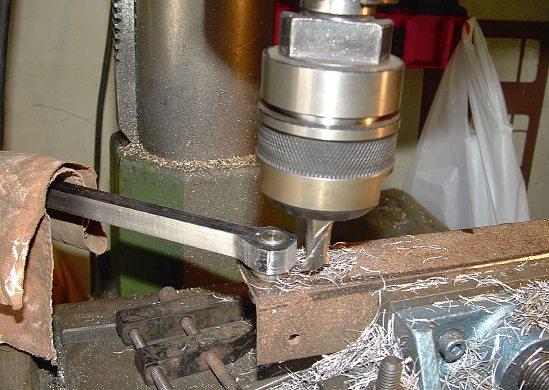
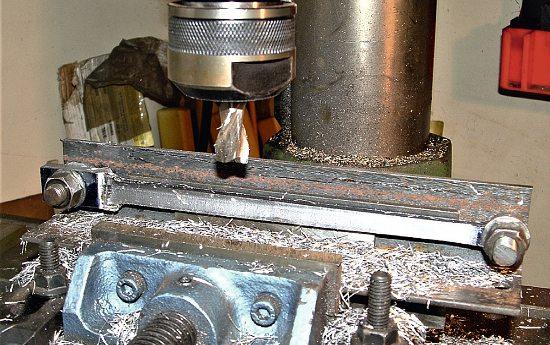
To nishthejoboffIhada littlemethodIusedtomake surethatIdidn’tgoovera sharpedge.Imountedtherod inthevicebetweenacouple
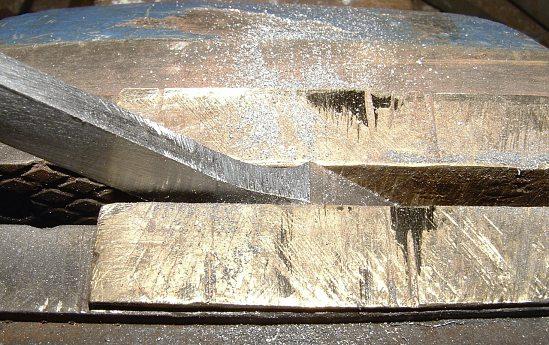
ofpiecesofbrassanglesuch thattheedgecoincidedwith thetopoftheangleandthen youcould leawaytoyour heart’scontent. Photograph 182 showsthemounting. TopolishtherodsIuseda polishingstickmadefroman8 inchlengthof ½ x ⅛ inchblack bar,whichhasroundededges ofcourse,withtwoinchesof theendbentuptoclearyour
knucklessothatastripof emerypapercanwrapunder itasshownin photo183
Justrememberthatemery paperdoesnotlastforever soyouneedtokeeppushing anotherpieceup. Photograph 184 showsmyrolloftapestry woolandapieceof3/32inch weldingrodtowrapitround toformacoilsothatitcanbe pokedintotheoilreservoir.

255 LNERB1 www.model-engineer.co.uk >>
Polishingtherods.
Connectingrodendsreadyforfinishingoff.
Thinningdownaconnectingrod.
Usetapestrywoolintheoilreservoirs!
Usingbrassangletoprotecttheworkwhilefiling.
179 180 182 181 183 184
Profilingtheendoftherod.
Photograph185 showsthe B1slidebarsandyouwillnotice thatIhaveincludeda1/32inch packingpiecebetweenthem asinthefullsizeengine.The reasonforthisissothatasthe slidebarswearalittleyoucan removethepackingpieceand removeasimilaramountoffthe outerspacer,oralternativelyyou canre-metalthecrosshead.My preferencewouldbetore-metal thecrossheadsanyway,which Iwillbedescribingshortly, includingthewhitemetaling! Youwillalsonoticeon photo 185 thewhitemetaling.There aretwooilingpointsontheslide barsjustinfrontofthealmost verticalsupportforthebars. Theseneedtapping6BAready toscrewintheunionswhich arefedfromthe rstswab boxesonthesideplatforms oftheB1.Ihavealsoshown photo186 whichhasonitthe lubricationpipestotheslide bars.Notethatthereisalsoa corkpackingpiecebeneaththe slidebarsupportpillarandnote allofthelocknutsandsplitpins

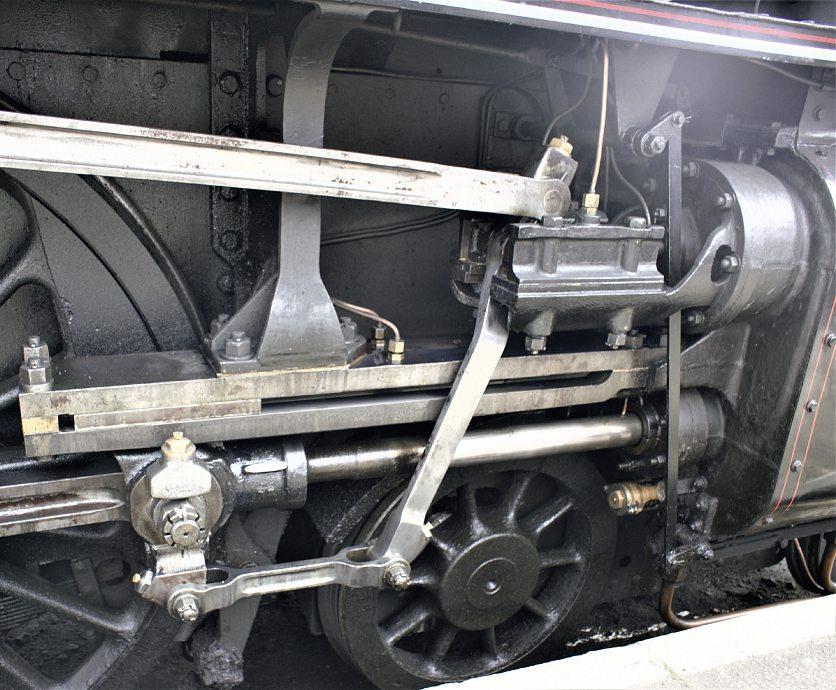
256 ModelEngineer 11August2023
B1slidebars–notepackingpiece.
185 186
Slidebarlubricationpipes.
inthisarea.Theyshouldallbe included.Theseareall1/32inch splitpinsbutIhavealsomade some15thousplitpins-when agentlemanbythenameofJim Scroobycalledinandspentthe nightwithushetaughtmehow to makethem.Theygothrough allofmy12BAbolts.
JimwasaSpit repilotin WW2andthenafterthewar hebecameaninstrument mechanic.Allyouneedare someofthosewiretiesused forpolyfreezerbags,whichare madefrom15thouwire.Mark adeeplyscribedlineonapiece ofsteelplateandlayawirein thegrooveandscrapeitdown levelwiththerestoftheplate
andfolditrounda1mmdrilland thereyouhaveit!QED.Another littlepieceofuselessknowledge whichyoucancontemplate.
Ifyouwanttomaketomake yourowncrossheadshavea lookatPeterSeymour-Howell’s articleonhowhemadehis (M.E.4709,January27).Itisan education.Minearevirtually thesameashiswere.Iwas hopingtomakeapatternfor themsothattheywouldhave beenlostwaxcastinstainless steel,butitwasn’ttobe.Iam hopingthatAdamCromightdo thejobforus! Photograph187 isagoodphotographoftheB1 crossheadandsimilarly photo 188.However,ifyounotice,
theright-handcrossheadis notthesameastheleft-hand oneon61264asthefourbolts aremissing!Ipresumethat theleft-handcrossheadhas abolted-ondroplinkandthe otherright-handonehasbeen castsolid.Anyway,thatwould saveyouthejobofmakingall those15thousplitpins!
Nowawordaboutwhite metalling.Ihaveaveryold toolmaker’sclampmadebymy dadwhenhewasanapprentice. Ialwaysusethisformywhite metallingasonecanuseitto dambothendsofthecrosshead upandthenjustheatitup alittleuntilthewhitemetal melts.Iusedtohavelotsofthis justkickingaroundtheplace whenweusedtobesellingour castings.Ifnot,Iwouldsuggest thatyoubuyacheapchildren’s lorryorsomethinglikethat.You
willonlyhaveagapofabout15 thouto llbutI ndthatitworks atreat.Ihaveuseditformy4MT andtwoY4’s.Unfortunately, theonlyphotographsIhaveof thewhitemetallingarequite lowresolutionbutforwhatit worthIhaveincludedthemhere.
Photograph189 showsthepair ofcrossheadswhichhavebeen whitemetalledformy4MTand arenowreadyformachining.
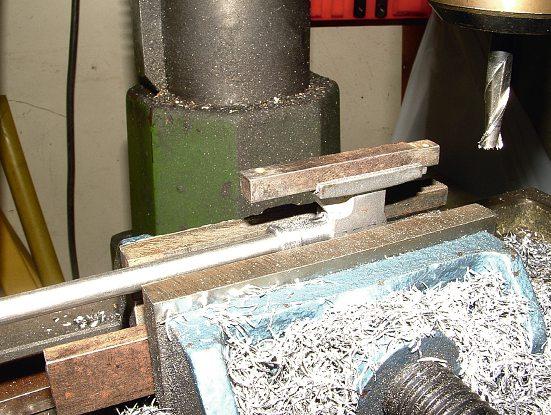

Photograph190 showsaY4 crossheadbeingmachined backtosize.Lubricationisvery importanthere.
●Tobecontinued.
NEXTTIME
Wemanufacturethevalve gear.

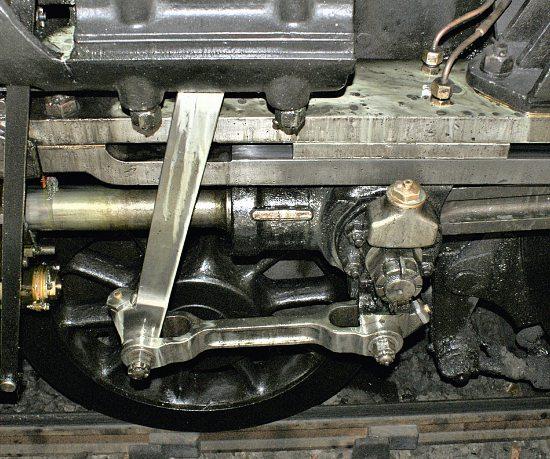
257 LNERB1 www.model-engineer.co.uk
Crossheadswhitemetalled.
Machiningawhitemetalledcrossheadtosize.
B1left-handcrosshead.
187 188 190 189
B1right-handcrosshead.
Viewsandopinionsexpressed inletterspublishedin Postbag shouldnotbeassumedtobe inaccordancewiththoseof theEditor,othercontributors, orMortonsMediaGroupLtd. CorrespondenceforPostbag shouldbesentto:
MartinR.Evans, TheEditor,ModelEngineer, MortonsMediaGroupLtd,Media Centre,MortonWay,Horncastle, LincsLN96JR
F.01507371066
E.MEeditor@mortons.co.uk
Publicationisatthediscretion oftheEditor.Thecontentof lettersmaybeeditedtosuit themagazinestyleandspace available.Correspondentsshould notethatproductionschedules normallyinvolveaminimumlead timeofsixweeksformaterial submittedforpublication. Intheinterestsofsecurity, correspondents’detailsare notpublishedunlessspecific instructionstodosoaregiven. Responsestopublishedletters areforwardedasappropriate.
Braking
DearMartin,
Bob’sRailwayBraking stoppingdistances(M.E.4719, June16)havefallenintoa classicover-simplificationtrap. Over40yearsago,Iwas occasionallyanOfficerin Chargeonthemostpowerful trainsevertoruninBritain.
WhenwewereinthedoghouseforSignalsPassed AtDanger,amachoboss re-slide-ruledthebraking calculationsforhimself, thinking,‘Force=Massx Acceleration:howhardcan itbe?’.Yetalthoughhisnew figuresseemedtoshowan increasedsafetymargin,applying themonthetrackactuallymade SPADsworse,ratherthanbetter.
Hisover-simplifiedformulaleft outtheinertiaofrotatingparts. Itwasfairlyobviousthatthese included36rotatingwheelsets carrying28hydrokineticbrakes. Butitwaslessobviousthat theyincludedthe gearedup inertiaof16gearboxes,8 long,chubbyCardanshafts,8 morehydrokineticbrakes,and8 formidableelectricmotors.All timesthesquareoftherelevant gearratio.
WhileI’dbeinterestedtosee whetherwheelinertiamakes muchdifferencetoBob’sride-on calculations,therealwarningis forlocomotiveswithhigh-geared transmission.
Think‘push-and-go’flywheel toy:Force- Inertia xAcceleration -notjustMass.
DavidHalfpenny(Derby)
Isuspectthatasmodelsare scaleddown,rotationalinertia becomeslessofafactor intheoverallinertiaofthe system.Ihaven’tfoundtime todothemathsbutitcould beaninterestingexercisefor someone!– Ed
WiringColours
DearMartin,
IhavereadMrMikeJoseph’s PostbackcommentinM.E.4720 (June30)aboutmyarticleon NVRswitches.Iappreciatehis commentswhichIunderstand
weregiveninaconstructive manner.Inmydefence,Iwould liketosaythatitseemedtome thatusingthesecolours,itwould beeasiertoexplaingraphically howthecircuitworks.Black andbrownarenotgraphically attractivecolours.Anyway,the coloursusedwereidentifiedas correspondingtoLive,Neutral andGround.Probablyifanew schemeweremade,Iwould usetheharmonizedcolours andreplacetheblacklineswith thecorrectcolourindashed format.Weshouldalways rememberthelastsentenceof thearticle:‘Ifyoudonotfeel safeorcomfortableconnecting electricalcircuits,don’tdoitand askaprofessionalforhelp’.
Bestregards, LuísTrincão
Generators
DearMartin, CanIaddafewwordstothe interestingpiecebyBobHayter (M.E.4721,July14)?
Wearetoldthatitisimportant topositionthemagnets alternatelyNupandSup.Itis justasimportant,though,todo thesamewiththecoils.When doingthecontinuitytest,usethe compasstocheckthatalternate coilsproducea(feeble)Nand Sasthecurrentflows.Getthis wrongandthecoiloutputswill tendtocanceleachotherout.
Itwouldalsobehelpfultoknow alittleaboutthewireforthecoils. Whattoaskfor,andwhatgauge -andforthoseindistantpartsof theex-empire,whatthegauge meansinmillimetres.
Andfinally,pleaseaddanote thattheoutputwillvaryalotwith thedrivenspeed,andwillbeno useformanyelectricaltasks.In fact,itwouldhelpifafewwords onrectificationandvoltage controlcouldbeadded-justin caseanyonewantedtouseitfor chargingbatteries,ordrivingDC motors,orsmallLEDs.
Regards, TimStevens
BobHayterreplies: TimStevenscertainlyshows thereisplentyofscopefor

morework.Idon’tshowdetails ofthewindingsastheycome preformedwiththecastings.I havenotcarriedoutextensive tests,justsufficienttoshowthat thesystemsworkasintended. ToquotefromtheCringleModel Engineeringwebsite(www. cringlemodelengineering.co.uk) thesmallgeneratorfeaturedin part1willgenerateupto6volts andlightone6mmLEDataround 20mA.Poweredfromtheturbine theLEDwilllightataroundjust 5psibutneedstohaveover30psi forfullbrilliance.TheLEDinthis casewillneedaseriesresistance tolimitthecurrenttoaround 20mAtoavoiddamage.
Themultipolegenerator generatesfromaround4volts at150rpmto24voltsat1000 rpm.Itcancertainlysupply100 mAandlight5or6LEDs.Itall dependsonthepoweravailable fromtheengine,pulleysizes etc.I’mnotintendingtouseitto rechargethecar!
Timmayhavemorequestions butIthinkhewillhavetodohis ownteststofindtheanswers.I seethatthecastingsarecurrently outofstock,whichisashame.
MetersandMetres
DearMartin,
FollowingonfromJohn Wing’sletter‘MetersandMetres’ (M.E.4720,June20),Itoo dislikeourhabitofcopyingthe Americans.Forexample,their habitofusingverbsasnounsis onewhichcausesextradental treatmentduetothegrinding ofteeth!Atypicalexampleis the‘consist’ofatrain.Itshould, ofcourse,be‘formation’.
Nounsusedasverbsisalsoan Americanhabit.Sometimeago thephotoofatrainleavinga tunnelwascaptioned‘.......train exitingtunnel’.WhenIfirstread thisIthoughtitwas‘exciting’ mis-spelt!
Theword‘exit’isquitean interestingexample.Itstarted lifeasaLatinverb(meaning‘he goesout’),wasthenadoptedinto Englishasanoun(‘…heading fortheexit’)andnowfindsitself convertedbackintoaverb!–Ed.
258 ModelEngineer 11August2023
MikeHanscomb
TheStationary SteamEngine
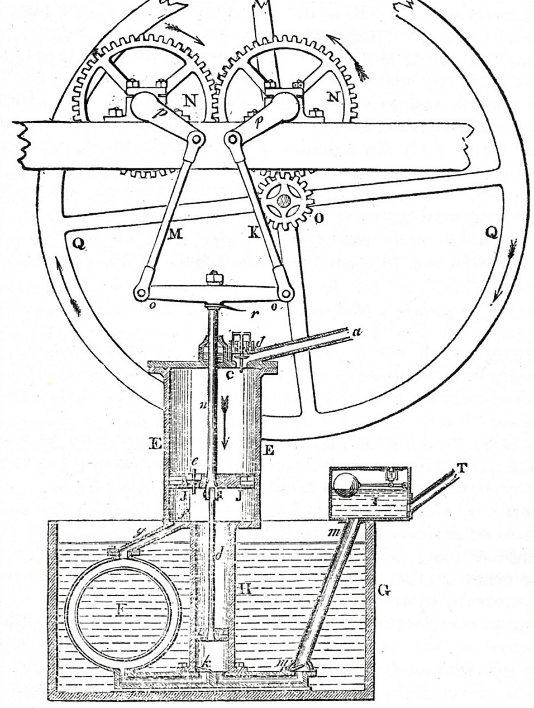
PART49–SMALLERENGINESANDNON-BEAMENGINES
RonFitzgerald
Continuedfromp.163, M.E.4721,July14
Themajorityoflarge stationarysteamengines builtbetween1800 and1870followedthestyle describedinthelastsection ofthisseriesinthattheywere integrallybuiltintotheengine housethataccommodated them.Therewere,however, circumstancesthatmadethe house-builtengineundesirable orimpracticalandanew generationofsmallerengines emergeddesignedtobewholly orlargelyindependentoftheir shelter.Theresultunitedthe variouspartsoftheengine togetherwithinatimberframe oruponacastironbedthat wasbolteddowntoanashlar foundation.Intheeventofthe enginebeingre-locateditcould bereadilydismantledand, withitsashlar,movedtoanew site.Clearlytherockingbeam wasanimpedimentinthese circumstancesandmanyofthe proposalsforenginesofthis kindsoughttodispensewithit.
In1765JohnSmeatonhad designedasmallportable engineintendedforusein drainingcivilengineeringworks. Tomakethemachinemore compacthehadavoidedthe needforabeambyattaching thepistonrodtoachainwhich passedoverahalf-circular segmentofarockingpulley fromwhenceitdescendedto thepump(ref249).Adifferent approachwasusedbythe Rev.EdmundCartwrightwho ismainlyrememberedfor hisattemptstoproducea powerloom.Thisandother textilemachinesformed thesubstanceofastring ofpatentslodgedbetween
1785and1801intendedto formthebasisforhisbrother John’smillatRetford.Included wereapplicationscovering improvementsinsteam engines.
TheNovember1797patent (No.2202)proposedtoobtain rotationfromasingle-acting cylinderbyconnectingthe pistonrodtoacrossheadwith connectingrodsattachedto eitherend( g154).Abovethe cylinderabeamcarriedtwo crankshaftseachconnected
totheoppositeendsofthe connectingrodssuchthatthey workedincontra-rotation.The twoshaftscarriedgearwheels incommonmeshandone ofthegearsengagedwitha piniononitsundersidewiththe objectofproducingcontinuous rotarymotion.Thepinion shaftalsocarrieda ywheel. Cartwrightusedaseparate condenserbutinsteadofusing internalcoldwaterinjection theheatwasabstractedfroma coolingvesselbysurrounding
259 www.model-engineer.co.uk >>
takesa lookatthehistoryand developmentofthe stationarysteamengine.
Fig154
EdmundCartwright’sengine.Patent2202,11thNovember1797,Farey, Treatise…p.666.
Fig155
itwithcoldwater-asurface condenser.InFarey’sview thismethodofcondensation wasthemainshortcoming inCartwright’senginehaving alreadybeentriedand abandonedbyWatt.Fareyadds (ref250):
MrCartwright’sproposal wascon nedtosingle(acting) engineswhichwerenotso goodforturningmillsasdouble (acting)engines.Someyears afterthepatentMrCartwright madeadoubleengineofabout sixhorsepoweronthisplan foramillatWisbeach;butit couldnotperformtheworkit wasappointedtodoandwas removed;itwasafterwardsset upfortheDukeofBedfordat hisfarmatWoburnbutitproved averydefectiveengineandhas beenbrokenup…
Cartwright’senginemay havebeenephemeralbuttwo othershadamorelasting impact.The rstwasthatof
JamesSadler,confectioner, engineer,gunmaker,chemist andthe rstEnglishAeronaut. Sadler’sdiverseactivitieshave beendealtwithelsewhere (ref251)butourconcernis withthatpartofhiscareerthat involvedthesteamengine.At leastasearlyas1786,Matthew BoultonwasawarethatSadler wasattemptingtodevelopa directrotativesteamengine and,inthelightofWatt’sfailed steamwheel,wasdismissive. Sadlerhadalsoconcededthe futilityofthisexerciseby1791 whenhetookouthispatent (ref252)whichincludedthe conventionalarrangementof piston-in-cylinderdrivingtoa crankshaftwitha ywheel.At leastoneenginewaserected atCoalbrookdalein1792 whereitwassketchedby Reynolds( g155).Ithadtwo cylindersintandem,onelarger indiameterthantheother withadiaphragmseparating
thecylinders.Thetwopistons weremountedonacommon rod.Steamenteredabovethe smallerpistonand lledthe upperpartofthesmallcylinder drivingdownthesmallerpiston and,withit,thelargerpiston. Asthelargerpistonreached itslowerlimititdepressedthe projectingspindleofavalve inthediaphragmallowing thesteamtopasstothe undersideofthelargerpiston which,byitsdifferentialarea, wassubjectedtoagreater forceandaccordinglytended torise.Atcompletionofthe up-stroketheprojectingvalve spindleofanothervalveinthe pistonmadecontactwiththe cylindertopcoverandopened thevalveallowingthesteam topassthroughthepiston tothesurfacecondenser. Becauseworkwasdoneon bothstrokestherewasno deadmotionastherewould havebeenwithasingle-acting cylinder.Ratherthanthe gearedtwin-connectingrod usedbyCartwright,Sadler’s engineemployedacrosshead andpairedrods anking thecylinderswhichconnect upwardswithatwo-throw crankshaft.
Inthisformtheenginewas notsatisfactoryandpossibly onlyadevelopmentversion wasbuilt.Sadlerwasmore successfulafterhemovedto Londonwherethreemachines tohisdesignswerebuiltwhich RenniereportedtoBoultonand Watt ...answersexceedingly well… .Theseenginesmay haveabandonedthetwo cylindercon gurationinfavour ofasinglecylinderforthiswas theformatofhisbestknown machine,the rststeamengine workinPortsmouthDockyard.
Asachemist,Sadlerhad beenassistanttotheprofessor ofchemistryatOxford Universityandhisskillsinthis directioncaughttheattention ofSirSamuelBenthamwho wascurrentlyestablishingthe BoardofNavalWorks.Sadler wasalreadyinnavalserviceas BarrackMasteratPortsmouth whenBenthamdivertedtohim tothepostofChemisttothe newBoard.In1796Bentham wasbuildingtwosloops,the
Arrow andthe Dart, andin thisconnectionherequired asteamenginetodrivehis woodworkingmachineryat Redbridge,Southampton.A drawingoftheseframesaws dated21stDecembr1797 showsthemtobedriven byaSadlerenginebutthis remainedaproposalasthe enginewasnotcompletedin timeand,inadismantledstate, itwasremovedtostorage atPortsmouth.In1799the enginewaserectedinorderto performservicepumpingout thedockbasins.TheGoodrich paperscontainadrawingofa Sadlerengine,believedtobe themachinewhichbecamethe Portsmouthpumpingengine ( g156).
Thecylinderissingle-acting andappearstoworkonthe Watt/Cornishpumpingengine cycle.Steamwas rstadmitted abovethepistonwhich, impelledbyavacuumonits underside,wasdrivendown thecylinder.Atthecompletion ofthedownstrokethesteam supplywascut-offandthe upperpartofthecylinderwas placedincommunicationwith thelowerpart,establishing anequilibriumpressure stateaboveandbelowthe piston.The ywheelmust beassumedtohavebeen largelyresponsibleforthe returnstrokewhichinvolved theremainingsteamabove thepistonbeingtransferred totheunderside.Onthenext steamstrokethelowerpartof thecylinderwasopenedtothe combinedcondenserandair pump,bothofwhichcreated theunder-pistonvacuum.This muchwasowedtoWatt;the noveltylayinthemechanical construction.Whilstthere wasasmallbeam,itspurpose wassimplytoworktheair pump.Thecrankshaftwith itscontinuouscrankpinwas drivenbytwinconnecting rodswhichextendedtoa crossheadattachedtothe pistonrodsimilarinformto Sadler’sCoalbrookdaleengine. Tomaintainthecrosshead inparallelismwiththepiston rod,tworollerswereattached toeachendofthecrosshead, therollersrunningbetween

260 ModelEngineer 11August2023
JamesSadler’sengineassketchedbyWilliamReynolds.




































































































































































































































































